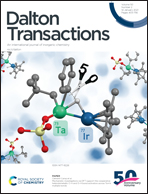Realizing the enhanced cyclability of a cactus-like NiCo2O4 nanocrystal anode fabricated by molecular layer deposition†
Abstract
Lithium-ion batteries with conversion-type anode electrodes have attracted increasing interest in providing higher energy storage density than those with commercial intercalation-type electrodes. However, conversion-type materials exhibit severe structural instability and capacity fade during cycling. In this work, a molecular layer deposition (MLD)-derived conductive Al2O3/carbon layer was employed to stabilize the structure of the cactus-like NiCo2O4 nanocrystal (NC) anode. The conductive Al2O3/carbon network and cactus-like NiCo2O4 NCs are beneficial for fast Li+/e− transport. Moreover, the Al2O3/carbon buffer-layer can prevent the NiCo2O4 NCs from agglomeration and form a steady solid electrolyte interphase (SEI), thus hampering the penetration of the electrolyte. Owing to these advantages, the assembled NiCo2O4@Al2O3/carbon half battery shows a high reversible capacity (931.2 mA h g−1 at 2 A g−1) and long-term stability of 290 mA h g−1 at 5 A g−1 over 500 cycles. Quantitative analyses further reveal the fast kinetics and the capacitance-battery dual model mechanism in the 3D core–shell structures. The design and introduction of MLD-derived hybrid coating may open a new way to conversion-type and alloy-type anode materials beyond NiCo2O4 to achieve high cyclability.



 Please wait while we load your content...
Please wait while we load your content...